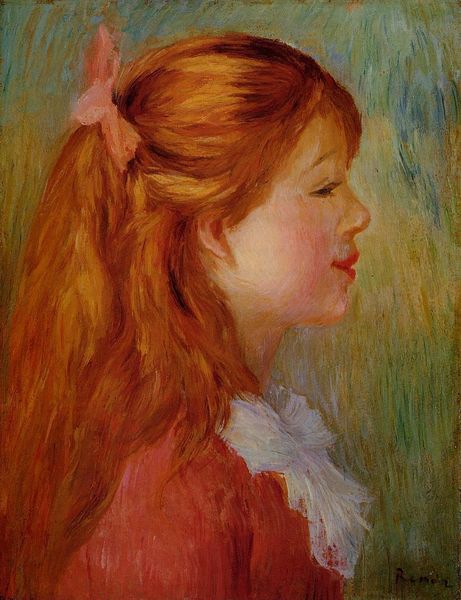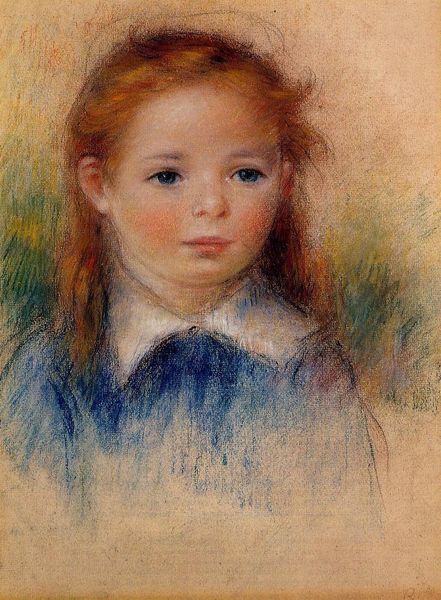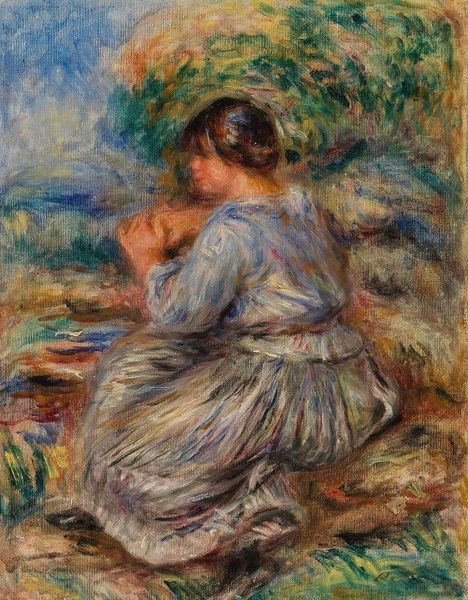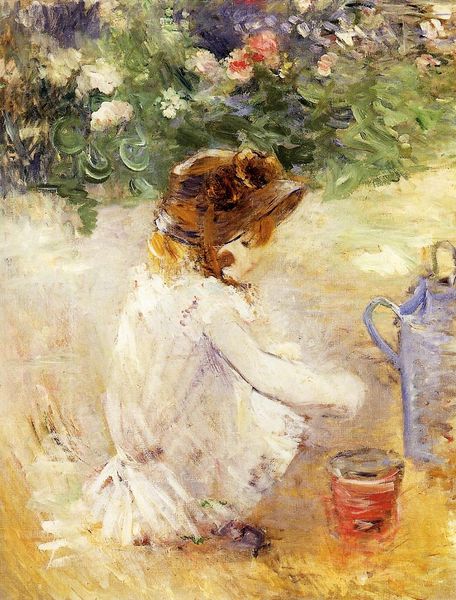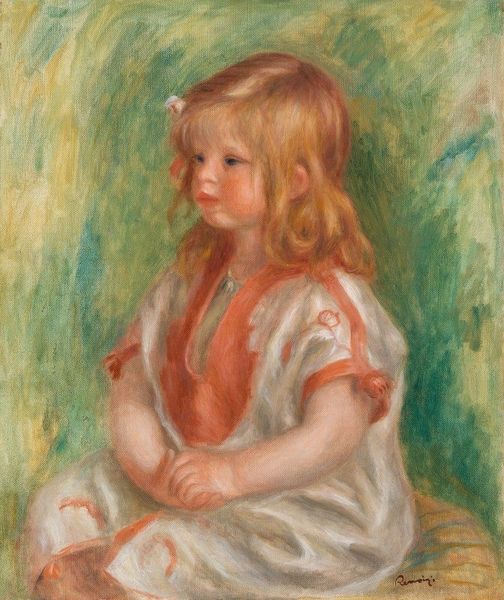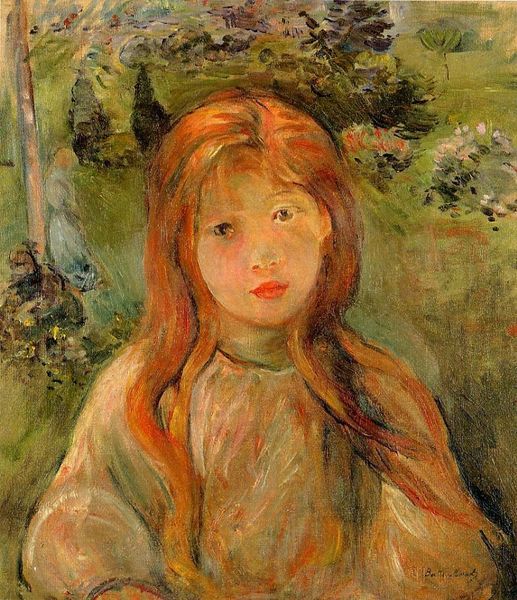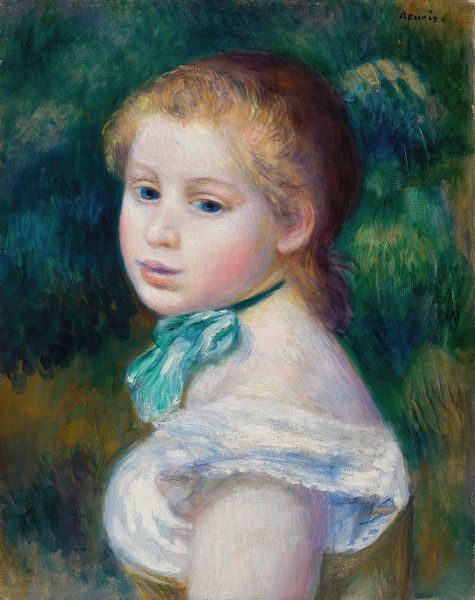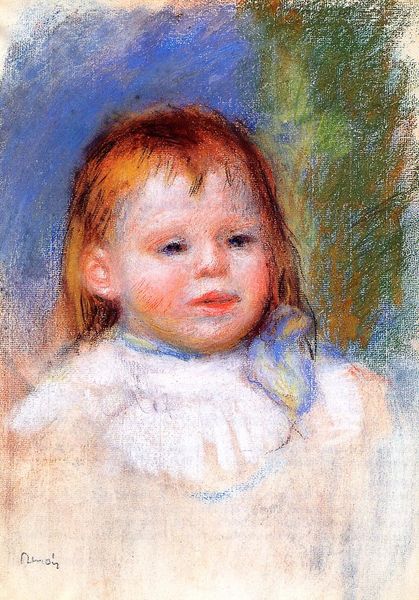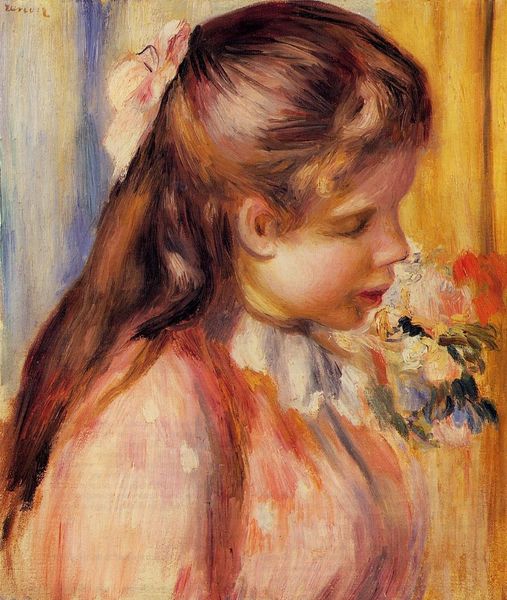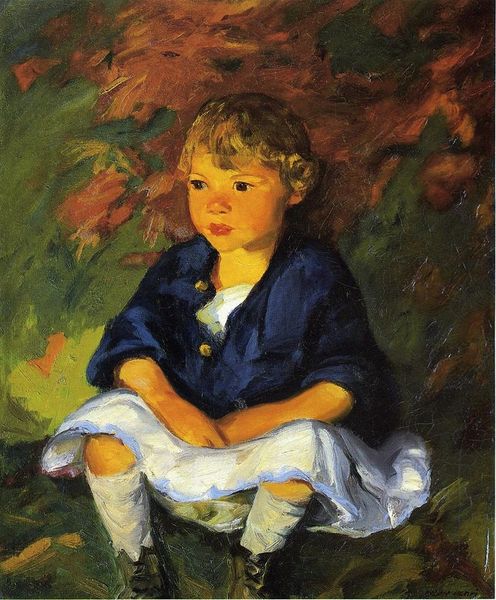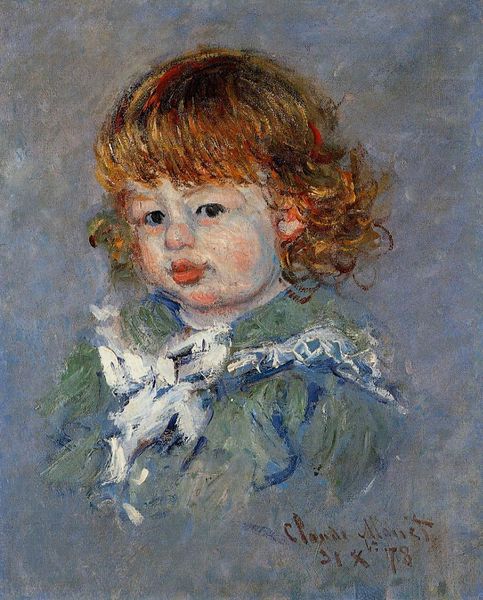
painting, plein-air, oil-paint
#
portrait
#
art-nouveau
#
painting
#
impressionism
#
plein-air
#
oil-paint
#
figuration
#
oil painting
#
realism
Copyright: Public domain
Editor: Here we have Renoir's "The Little Algerian Girl" from 1881, painted with oil. It strikes me as both intimate and a bit unsettling, this close portrait. What's your interpretation of this work? Curator: It's unsettling precisely because it engages with complex power dynamics. Think about French colonialism in Algeria. Renoir, like many artists of his time, was captivated by the "Orient," but that fascination came at the cost of perpetuating stereotypes. Who was this girl? Was she a paid model? Did she have agency in how she was portrayed? These are vital questions. Editor: So you see the painting as participating in the colonial gaze? Curator: Absolutely. While Renoir's technique is beautiful – the vibrant colours, the soft brushstrokes – we can't separate the aesthetic qualities from the socio-political context. Consider the title itself. "The Little Algerian Girl" reduces her to an anonymous subject, an object of European consumption. Editor: That's a powerful point. I hadn't thought about the title in that way. How do you think contemporary viewers should engage with such a piece? Curator: With a critical eye. We can appreciate Renoir's skill while acknowledging the problematic nature of his subject matter. It's an opportunity to reflect on how art can both reflect and perpetuate inequalities. It allows us to open conversations around representation and ethics in art history. Editor: This has totally changed my understanding of the painting; thank you. Curator: And thank you. Engaging with art should always be an opportunity for questioning and learning.
Comments
No comments
Be the first to comment and join the conversation on the ultimate creative platform.
